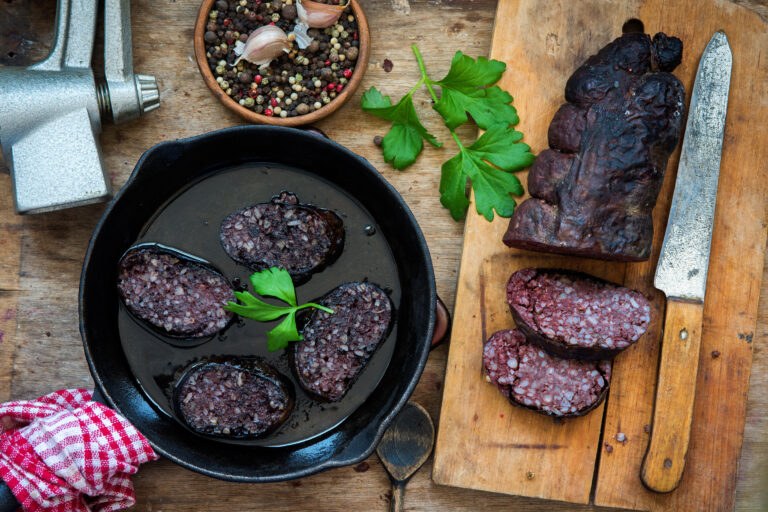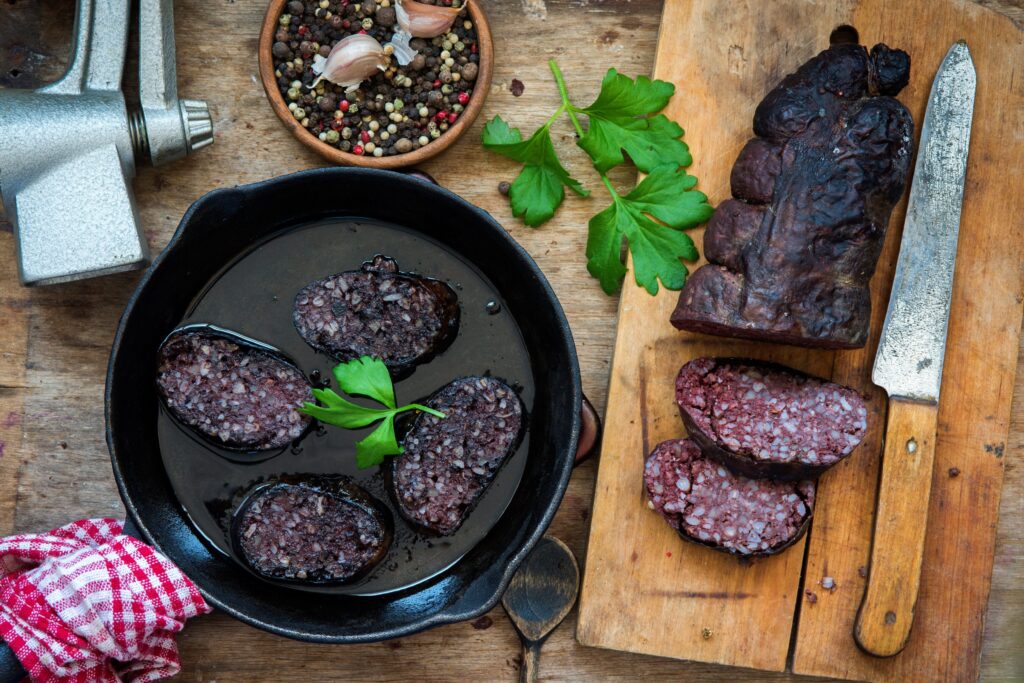Verivorst, a cherished dish in Estonia, is more than just food. It’s a symbol of tradition, unity, and celebration. This black pudding sausage has been at the heart of Estonian cuisine for centuries.
The story of Verivorst is deeply intertwined with the history and culture of Estonia. It’s not just about taste; it’s about preserving heritage and creating memories that last a lifetime.
Our team at Remitly created this guide as part of our series that celebrates the traditional foods of our global customers.
The History of Verivorst
Verivorst dates back to ancient times when Estonians had to make the most out of every part of an animal during harsh winters.
The sausage was typically made after pig slaughtering days in late autumn or early winter. These were communal events where families and neighbors came together to prepare for the cold months ahead.
Over time, Verivorst became an integral part of Christmas Eve dinners across Estonia. Despite changes in society and food habits, this traditional dish has remained popular among Estonians both at home and abroad.
Ingredients and Preparation of Verivorst
The main ingredients in Verivorst are pork blood, barley, onions, fatback (a cut from a pig), salt, pepper, and marjoram—a well-known herb often used in European cooking. Some variations may include other spices or fillers like rice or bread crumbs.
Preparation begins by soaking barley overnight before boiling it until tender. Onions are sautéed with chunks of fatback until golden brown. Then comes the crucial step—mixing fresh pork blood with the cooked barley-onion-fatback mixture along with seasonings. This filling is then stuffed into cleaned pig intestines using a funnel or sausage stuffer.
Recipe for Traditional Verivorst
Ingredients
- 2 liters of fresh pork blood
- 500 grams of barley
- 500 grams of onions, finely chopped
- 500 grams of fatback, cut into small pieces
- Salt and pepper to taste
- A handful of marjoram leaves
- Pig intestines for casing
Preparation Steps
- Soak the barley overnight in plenty of water.
- The next day, drain the barley and boil it until tender.
- In a large pan, sauté the onions with fatback until golden brown.
- Mix the cooked barley with sautéed onions and fatback in a large bowl.
- Add fresh pork blood to this mixture along with salt, pepper, and marjoram leaves.
- Clean pig intestines thoroughly under running water.
- Using a funnel or sausage stuffer, fill the cleaned intestines with the prepared mixture.
- Tie off each sausage link securely to prevent leakage during cooking.
Cooking Instructions
- Gently boil the filled sausages in water for several hours until fully cooked through.
- After boiling, smoke or bake them in an oven until their skin becomes crispy.
Remember: Making Verivorst is as much about enjoying the process as it is about savoring the final product!
Variations of Verivorst Across Estonia
While the basic recipe for Verivorst remains largely unchanged, regional variations do exist across Estonia. Some regions prefer a spicier version with more pepper or other spices, while others may add additional ingredients like rice or bread crumbs to the filling.
In coastal areas, it’s not uncommon to find fish blood used instead of pork blood. Despite these differences, all versions share a common thread—Verivorst is always made with care and respect for tradition.
Serving Suggestions for Verivorst
Traditionally, Verivorst is served with boiled potatoes and sauerkraut—a fermented cabbage dish popular in many parts of Europe. The tangy flavor of sauerkraut complements the rich taste of Verivorst perfectly.
For a complete Estonian Christmas meal, pair your Verivorst with sült (a type of jellied meat), rosolje (beetroot and potato salad), and finish off with some piparkoogid (gingerbread cookies). Remember to enjoy it slowly; savoring each bite is part of the experience!
Exploring the Global Influence of Verivorst
While Verivorst is deeply rooted in Estonian culture, its influence has spread far beyond Estonia’s borders. Today, you can find variations of blood sausage in many parts of the world—from Spain’s morcilla to Britain’s black pudding.
Despite these global influences, Verivorst remains uniquely Estonian at heart. Its enduring popularity serves as a testament to Estonia’s rich culinary heritage and the power of food in preserving cultural identity.
Estonian Cuisine: A Blend of Simplicity and Tradition
Estonian cuisine reflects its history, geography, and climate—simple yet hearty dishes that can withstand harsh winters.
Staple Foods in Estonia
Potatoes are a staple food in Estonia—boiled, baked or mashed—they’re served alongside most meals. Rye bread also holds an important place in the Estonian diet. It’s dark, dense, and slightly sour—perfect for pairing with soups or stews.
Popular Dishes
Apart from Verivorst, other popular dishes include sült (a type of jellied meat), rosolje (beetroot and potato salad), and kama—a unique dessert made from a mixture of roasted barley, rye, oat, and pea flour.
Seasonal Foods
Estonians value seasonal eating. Spring brings fresh greens and wild garlic; summer is for berries and mushrooms; autumn calls for root vegetables; while winter is all about preserved foods.
Influence of Neighboring Countries
Estonian cuisine has been influenced by Russia, Germany, Sweden, and Finland, and the food of its neighboring Baltic countries. You’ll find elements of these cuisines in traditional Estonian dishes.
Despite these influences, Estonian food retains its distinct character—simple ingredients prepared with care to create meals that are both nourishing and satisfying.
Visit the homepage, download our app, or check out our Help Center to get started.

